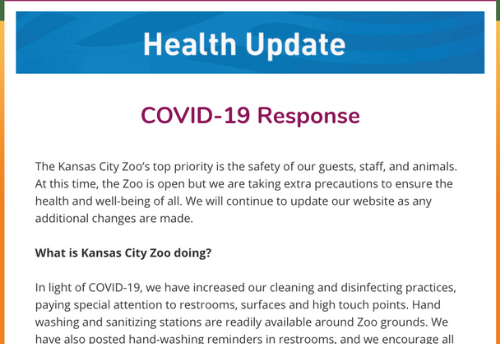
This will not be the greatest blog post you have ever read. It will give you an insight on why I believe setting expectations is one of the most important aspects to business relationship development and what steps I have found helpful in setting and managing expectations.
There. I have set your expectation for this post. It’s honest, straightforward and levels your anticipation as to what you are going to get.
Setting expectations is one of the fundamental duties of the agency Account Manager. It requires planning, provides structure, organization of roles (client and agency) and sets benchmarks of which to measure the actions and accomplishments by. For me, managing expectations is one of the most important aspects to developing trust and creating solid and rewarding relationship with clients.
But it doesn’t always happen. Let’s be honest. We get excited to start the project, the agency jumps in and goes one direction while the client is expecting another, and before you know it the agency is frustrated that the client doesn’t understand what’s going on and the client is frustrated because they don’t understand why the agency isn’t doing what they thought was going to happen. We’ve all been there. We’ve all done that.
It’s important for the agency and client to get on the same page. Here are tips I try to use when managing expectations.
1. Define your direction.
What is the overall goal and reason for the relationship? This requires complete honesty and transparency from the agency (Account Manager) and the client. Clearly identifying the overall goal of the partnership and making sure the entire team (internal and client) is aligned is the first step. During the relationship you need to revisit and point towards what you want to achieve and routinely question yourself and each other “Are we being asked to do something that is going to take us where we want to go”. If I don’t know what my client wants to accomplish, and if I can’t clearly articulate the overall goal, then I have not set this relationship or project up for success.
2. Create a roadmap.
Who does what, by when. Creating a detailed roadmap, or plan, which includes timelines, deliverables and action items will help the agency and client know what’s going on at all times. Even when things get off course, bust out that map and detour your way back the direction you need to go to achieve the overall goal. This will help manage expectations by defining how you will reach the destination and what it takes to get there.
3. Be flexible.
A mentor once reminded me “Be committed to your decision, but flexible in your approach”. And trust me, I repeat that to myself daily. Plans change, unavoidable and unexpected roadblocks pop up. Life happens. In client-service, you must be flexible and prepared for when the project or relationship veers off course. But that doesn’t mean that you throw everything out the window and chaos happens. There is an art to flexibility which ties back to revisiting the original decision and goal of the project and being flexible in how you get there. Setting expectations on how things have changed and being prepared to detail out the new roadmap with its detours is vital. A solid leader is upfront about the details and works to adjust expectations along the way.
4. Know your limits.
Setting expectations on the agency process and understanding what can be done is extremely important on what is expected to be delivered. From the very start of the relationship, it’s important to communicate how the team works as well as setting reasonable expectations as to how quickly projects can be completed… especially for those fun “one-off” detours. Being transparent on what the agency can and can’t accomplish is all about knowing the team’s limits. The Account Manager is there to serve as a bridge between the client and the internal team working on the project. This means they need to set expectations knowing what the internal team and client’s limits are. I also like the phrase and tactic of “Under promise and over deliver”. Setting the team up for success, even if its small, will build trust within the relationship and over time.
5. Communicate, Communicate and Communicate again.
The most important. Communication is essential in setting expectations and creating trust in a relationship. As someone who is passionate about client-service it has also made me passionate about communication. This task won’t be the easiest. We all communicate very differently, hear or misread something one-way or remember a conversation another way. With my clients, I work to discover their communication style so I can cater to how they prefer to be communicated with. It may be a weekly in-person, daily email check-ins or even (gasp) picking up the phone to talk about what is going on. This can also be challenging if you have multiple clients, meaning you have to be comfortable in client-service with multiple ways to communicate. Set yourself up for success from the start and figure out what the client expects regarding communication and then follow through. As the relationship grows, so will your communication, but it’s important to always remember that delivering clear and actionable information sets expectations and builds the trust.
Setting expectations allows for a more dynamic, exciting and ultimately rewarding relationship. It provides opportunities and opens the door for growth and new ventures to be part of. Hopefully some of these tips provide insight and ideas on how setting expectations can set you up for success.



